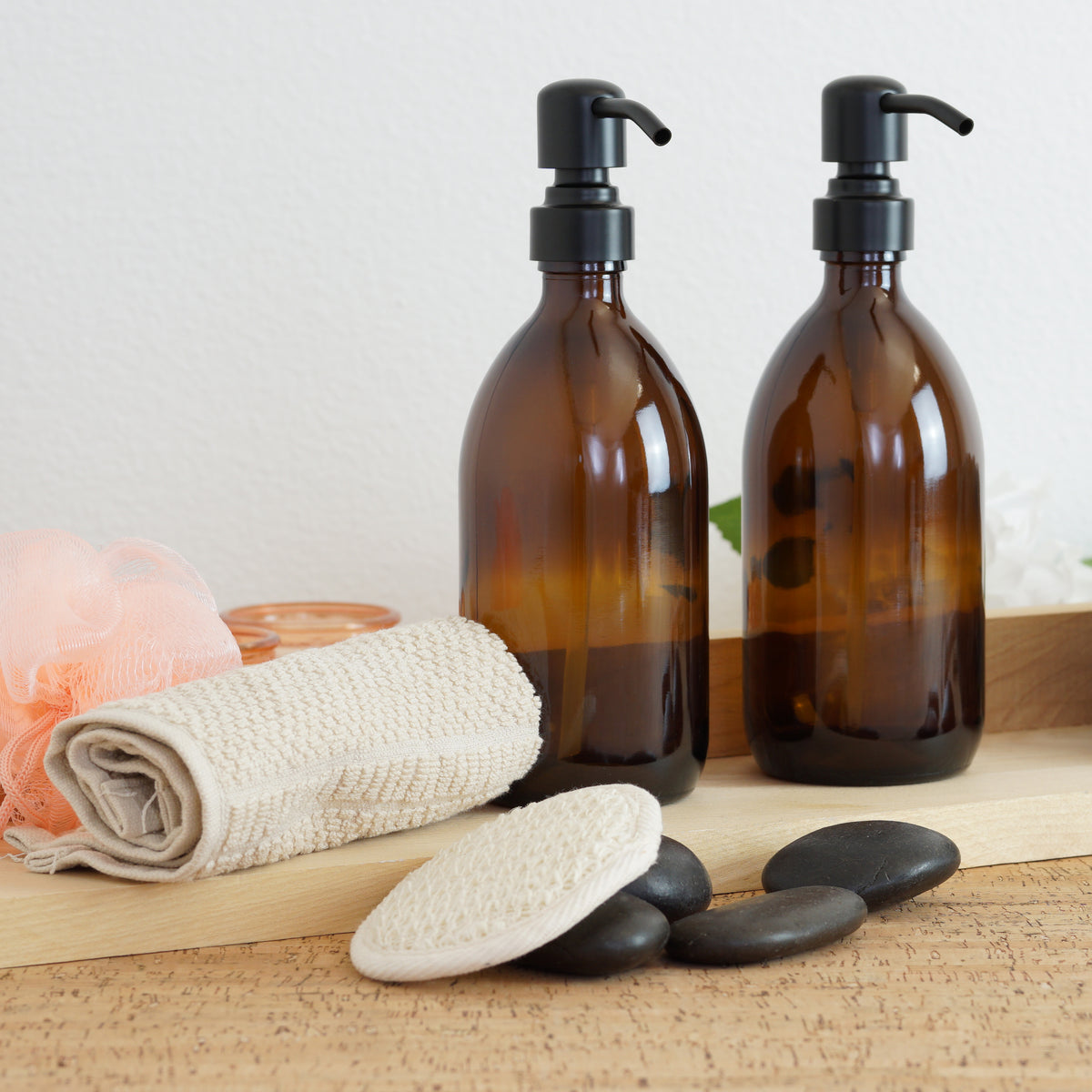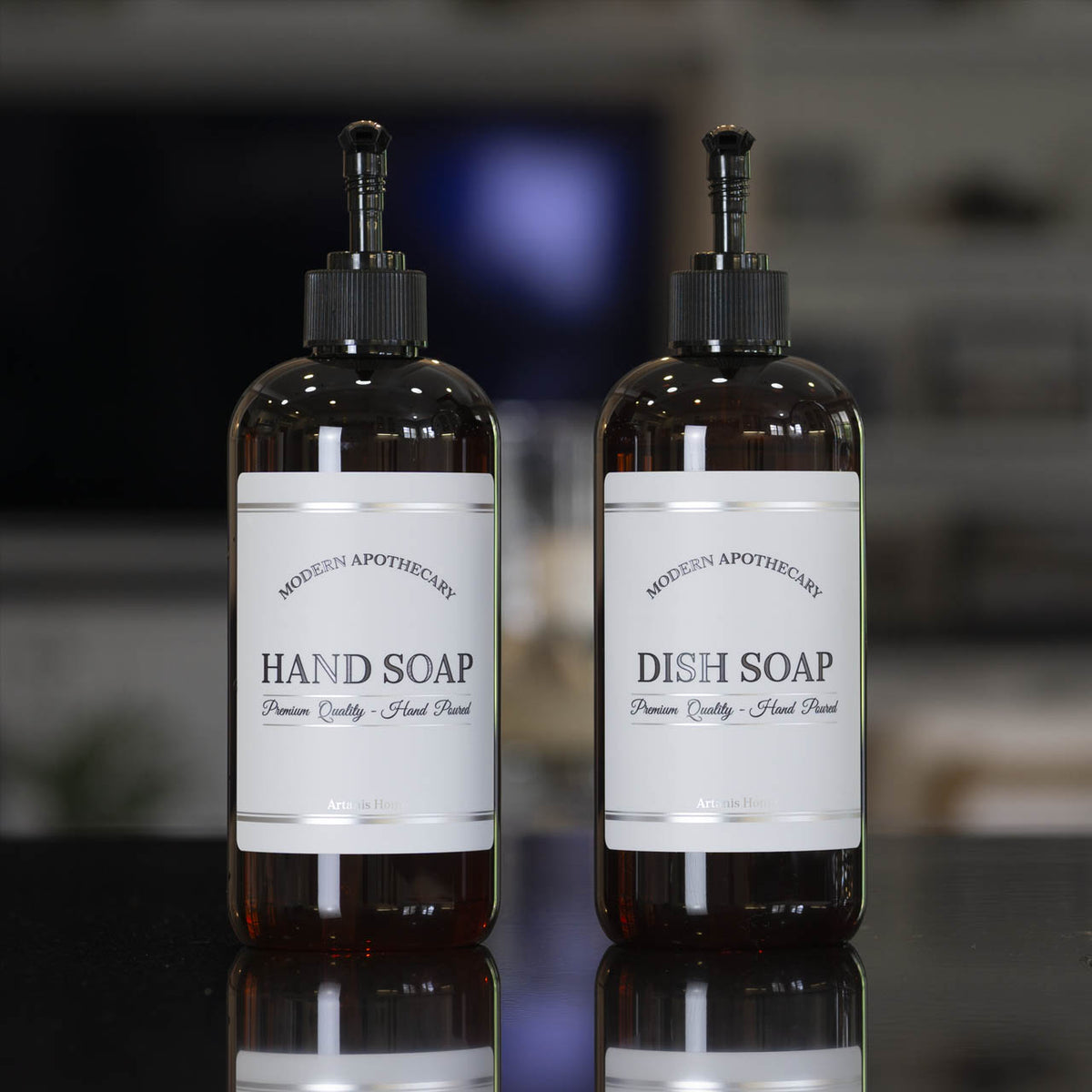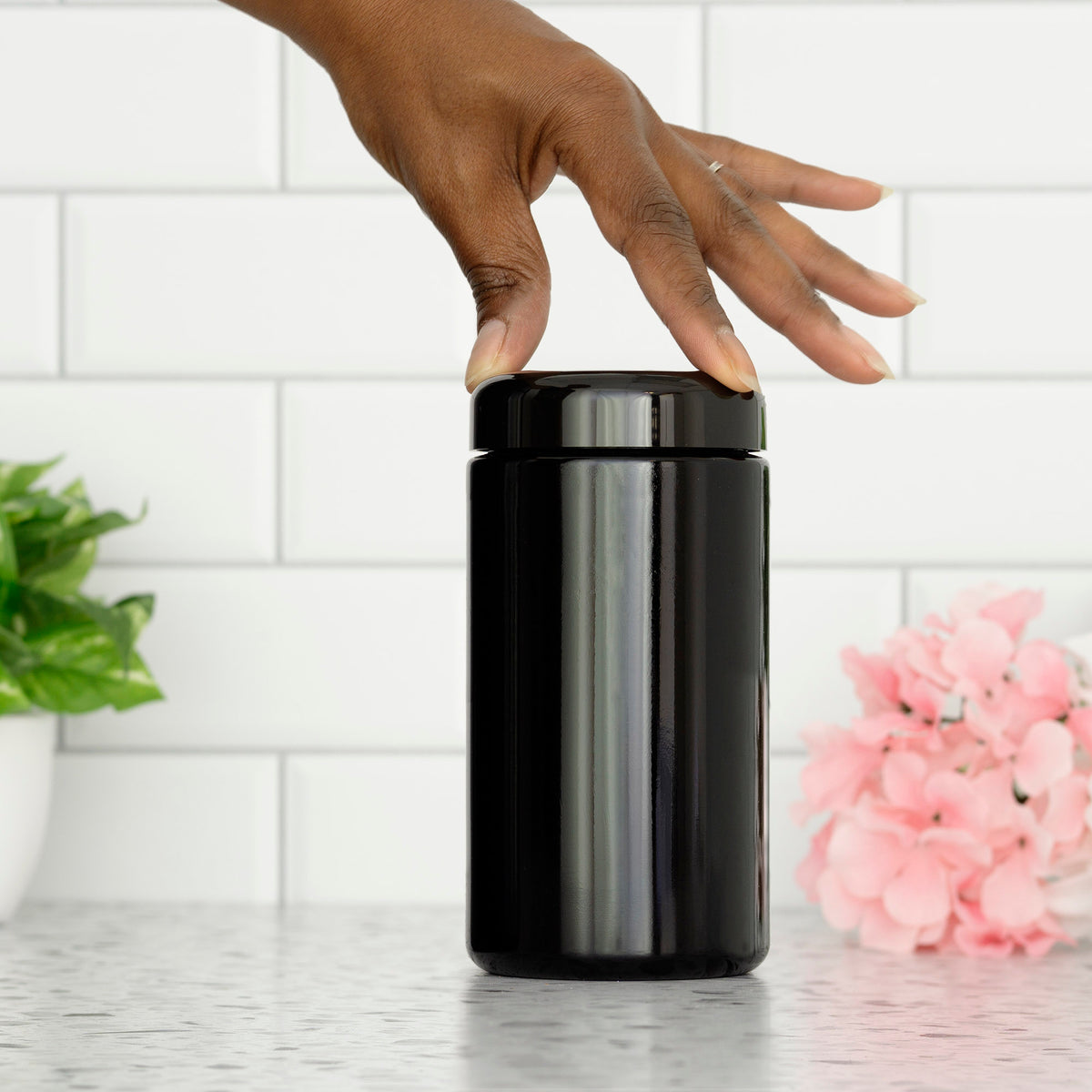Is Storage in the Dark Good Enough?? The Ultimate Miron UV Glass Test
It has been a while since I was first introduced to Miron UV Violet glass bottles and jars, and was first smitten with them. The airtight, smell proof jars are formulated to block harmful light rays and to allow infrared and UV-A rays in to preserve freshness and potency like no other jar. UV glass bottles and jars are clearly premium containers for long-term herb and dried goods storage, as well as high-end cosmetics. But do they actually work as well as the retailers of UV glass jars say?
If you've been researching ultraviolet glass, you've probably seen the chive test and the cherry tomato test where the UV glass clearly outperforms clear and amber glass jars. If you're not familiar, small cherry tomatoes were put into a clear jar, an amber jar (not pictured here), and an ultraviolet glass jar for 7 months. The tomato in the clear jar became white, shriveled, and disturbingly disgusting over that time. But the tomato in the Miron glass jar still looked plump and red.

But there's an important point that was not addressed in that test. As we all know, sunlight can speed up the decay of organic products, so we are often instructed to store our goods in a dark place. So why not just place them in a jar that is completely opaque? Where was that jar in this test? Surely, no light is best, right? That's the beauty (actually science) of the formula that makes up a Miron UV glass jar. It not only blocks light, it filters it. It allows into the container the wavelengths of light that are actually beneficial for preservation (for you geeky types, that would be near infrared wavelengths beyond the visible spectrum between 720 nm and 1200nm, peaking at 950 nm. An amount of visible violet light and invisible UVA can pass through). The claim that allowing some wavelengths of light prolongs preservation is what I wanted to test before becoming a retailer of UV glass.
And I took the time to do it.
12/12/22 - I chose one of our powder coated black glass jars, which was one of the first jars we offered when we started our business. Being 100% opaque, they block all light. And I used a lid with an F217 liner to be as close to the Miron UV glass jar as possible. (The Miron jar lid has a foam inlay to hermetically seal it.) And for kicks, I threw in a clear jar and an amber jar. I selected 4 cherry tomatoes from the same grocery store package, taking care to select those that were similar in size and appearance. With jars sanitized with alcohol and allowed to dry, the clean tomatoes were added to the jars and sealed.
 Then I left them alone on December 12th, 2021. I chose the top of a bookcase in my daughter's bedroom that gets great sunlight during the day. I actually use her room occasionally for naturally sunlit pictures like this one:
Then I left them alone on December 12th, 2021. I chose the top of a bookcase in my daughter's bedroom that gets great sunlight during the day. I actually use her room occasionally for naturally sunlit pictures like this one:

It's a beauty, isn't it? I can almost hear "Here Comes the Sun" in my head.....Anyway, back to the jars. I just couldn't wait 7 months, so I took a peek at 5.5 months and documented what I saw on May 27th, 2022:

I was actually surprised to see that only the Miron jar had quite a bit of moisture inside. I consulted with the manufacturer and we figure this could be either because I live in a high humidity area, or the moisture from the freshness of the tomato itself simply is held inside the jar. (NOTE - UV glass jars work best for dried herbs, so make sure that your herbs are completely dried out. Humidity packs can also be used if you need a particular humidity level to be maintained during curing or long-term storage.)
Again, I digress. So I could see at this point that, as expected, the clear and amber jars were not doing a great job of preserving the tomatoes. Already, though, I could see that there was a clear difference between the tomato in the opaque light-blocking jar and the Miron light-filtering jar. And once it began to wither, the tomato in the opaque jar then quickly began to rot and disintegrate.

So on August 7th, 2022 at 7 months (the term of the original test) we see the same results from the manufacturer's documented test. (Note that above, I was holding the clear jar and the amber jar is on my table with its tomato inside.) The tomato in the Miron jar was still looking great, while the tomato in the opaque jar finally succumbed to its nasty, mold-ridden fate. FYI, it was in the next couple of weeks that the tomato in the Miron jar finally began to show signs of the inevitable decay which happened rapidly at that point.
This answers the question of whether it's just as good to store products simply in a dark place devoid of light, or to place in a beautiful Miron glass jar and let the sun shine in!

We are now proud to offer Miron UV glass jars in our collection - the same European jars manufactured by Miron and sold by other retailers under different brand names like Infinity Jars and MyPharmJar. And we're proud to offer them at lower prices than the big name brands out there, and with customization options seen no where else. Although we have a curated selection (our warehouse is not THAT big), we can certainly procure any Miron products as a special order, and still at a lower price than the big name brands. Send your inquiries to info@artanishome.com.



